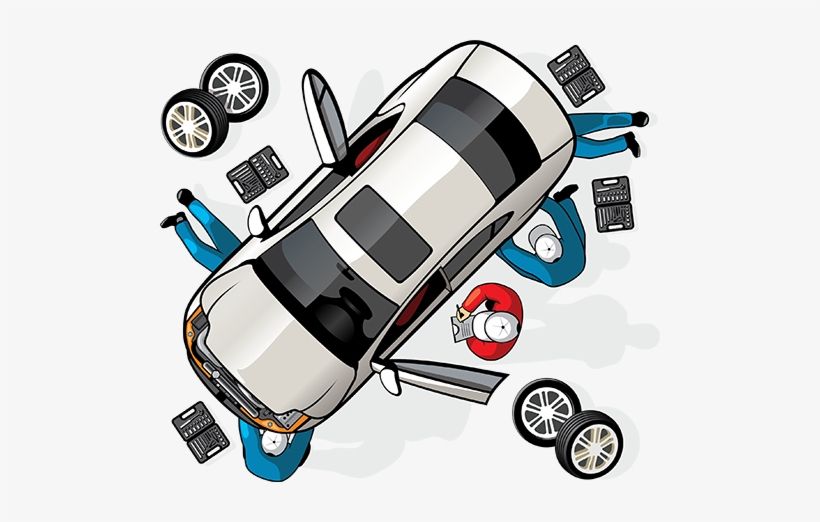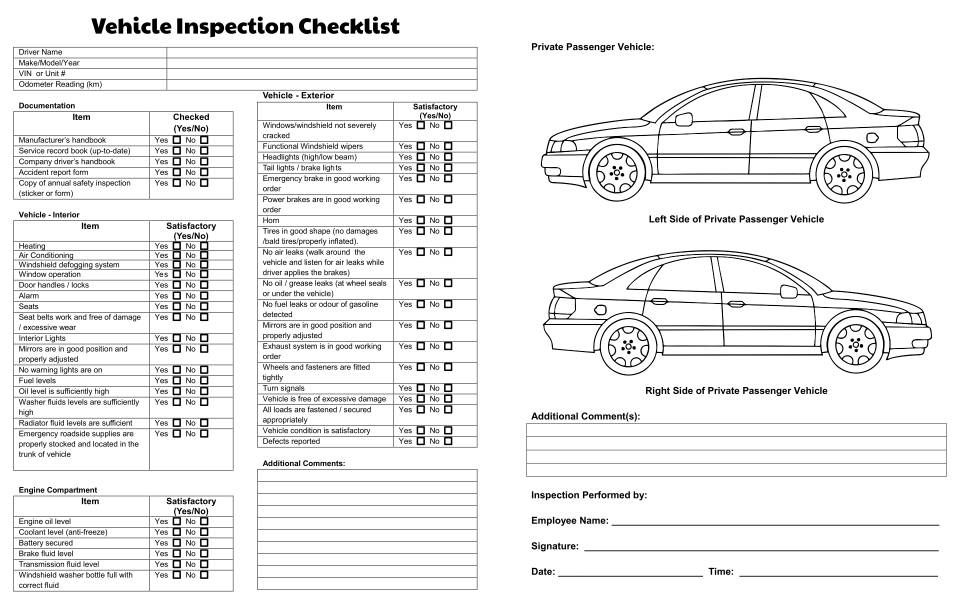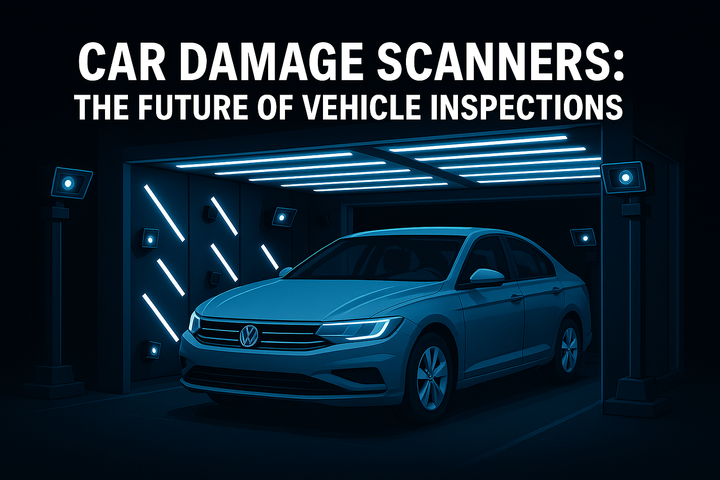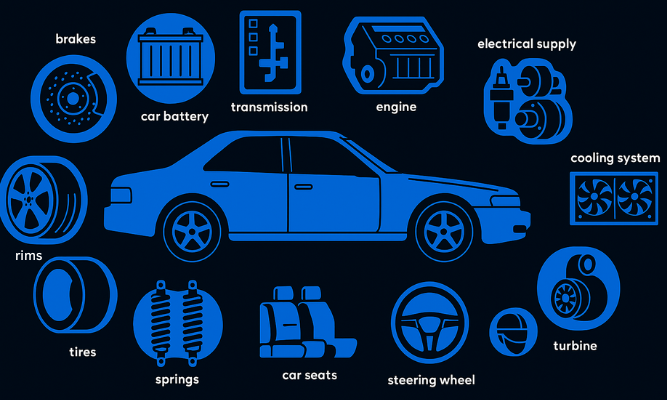Benefits of Digital Vehicle Inspections for Automotive Companies and Insurers | Inspektlabs
Automated car damage assessment is a game changer for companies. The technology is still developing and is bound to improve further. Manual inspections will inevitably become redundant sooner than later, and companies must adapt accordingly.

This post will discuss the need and relevance of car inspections for companies. We will discuss how companies benefit from car inspections.
After that, we will discuss the traditional model for car inspections. Lastly, we will analyze the complications associated with manual inspections and how automated assessments overcome them.
Introduction
Car inspections are a vital component of the business model of many companies. Companies require these assessments to track their inventories, maintain their fleets, and stay updated with their assets' condition.
Traditionally, car inspections were the sole domain of physical inspectors and surveyors. However, the landscape has revolutionized owing to modern technological advancements.

Companies are now transitioning to automated vehicle inspection. The new approach is highly beneficial for companies and is gaining traction worldwide.
What Companies Rely on Car Inspection?
Car inspections are relevant for businesses operating in the automotive industry. Car rental, car leasing, and used car players regularly require car inspections. Car inspections are an indispensable component for auto insurers as well.
These companies tend to operate with fleets of vehicles, and their cars leave their possession as part of their business model. Whenever a company provides a vehicle to a customer, it conducts an inspection to establish the car's status.
Companies use car inspections to measure the car's physical condition, such as detecting damages and establishing a baseline of the vehicle's state. In addition, car inspections enable companies to paint a holistic picture of how customers use their cars.

For example, metrics such as the odometer reading can accurately communicate how far the vehicle traveled.Regular car inspections are vital for companies that manage fleets of vehicles. These inspections enable the companies to keep an updated track of their inventory.
Companies undertaking regular assessments can catch any potential issues ahead of time. According to their discovery during the inspection process, they can take the appropriate steps forward, such as replacing or repairing car parts.
Another critical aspect of conducting car inspections is for detecting new damages. Companies need to know if a car part was damaged while in the customer's custody to charge them accordingly for it.
What is the Traditional Model for Car Inspections?

Let us briefly discuss the traditional model for car inspections. Typically, a customer will have signed up for a service where they possess a company's car. This situation arises with car leasing, car rental, and used car businesses.
Another important instance is insurance, where the customer has an insurance agreement with the company. In all these cases, the vehicle is often in a different location than the business.
So, it is not feasible for companies to ask customers to bring their cars back to the brick-and-mortar storefront of the business. Instead, these companies manually deploy surveyors or physical inspectors to inspect the vehicles. These inspectors must travel to the car's site to achieve this goal.
The company will schedule a suitable time with the customer, and the inspector will visit the site accordingly. Then, the inspector will conduct a visual assessment to inspect the car for damages. These surveyors typically carry paper or digital forms they must fill out.
After the surveyor is satisfied with their observations, they forward the vehicle condition reports to the company. Then, the information undergoes processing, and the next steps are decided accordingly.
Let's look at the common problems that arise under this approach and how automated vehicle inspections can tackle them.
How do Digital Vehicle Inspections Overcome Traditional Bottlenecks?
Digital vehicle inspections streamline the inspection process through different avenues. These automated inspections:
A. Reduce Costs

Automated car damage assessment significantly reduces the cost-per-inspection to just a few dollars. There is no longer a need to hire as many surveyors, and the cost of each inspection also reduces drastically. When companies send an adjuster or surveyor, it costs anywhere between $100-$300, depending on the location of the survey.
B. Save Time and Improve Efficiency
An AI inspector saves a considerable amount of time because the companies do not need to send a physical inspector to conduct the assessment. Sending a surveyor, scheduling a time slot with the customer, arranging travel, and other logistics may take 2-3 days.
The total time for inspection goes down to just a few minutes with automated car damage assessments. These inspections also come in handy for offering services in remote areas, which are not straightforward to access.

For example, Angle Inlet, Minnesota, is so remote that a surveyor must cross the U.S.-Canada border to reach the location. In such cases, a digital vehicle inspection will save considerable resources.
C. Reduce the Likelihood of Fraud
The fraud rate with manual inspections is high because of human involvement. An estimated 10-15% of fraud happens with manual checks.
A digital inspection process can circumvent this issue by creating a transparent and trustworthy platform with a significantly lower risk of fraud.
In addition to curbing fraud, these inspections also drastically reduce the scope of human error. AI inspection reports are consistent and reliable compared to human inspectors, who are subjective.
D. Broaden the Accessibility
The Covid-19 pandemic has adversely impacted a company's ability to send a surveyor. This issue persists globally because of unpredictable travel restrictions that may be imposed at any time.

Whenever such restrictions are put in place, the entire inspection flow stops. However, when they use digital inspections, companies are no longer constrained by these restrictions.
Additionally, these inspections enable companies to offer their services to a broader geographical market.
E. Improve Customer Experience
Digital vehicle inspections enable companies to offer superior customer experience. The entire vehicle inspection process, including pre-inspection, damage detection, and even claim assessment becomes streamlined.

Many customer pain points associated with vehicle inspections are long wait times, scheduling, high costs, and unreliable reports. These issues no longer persist when companies offer automated vehicle inspections.
Conclusion
Automated car damage assessment is a game changer for companies. The technology is still developing and is bound to improve further. Manual inspections will inevitably become redundant sooner than later, and companies must adapt accordingly.



